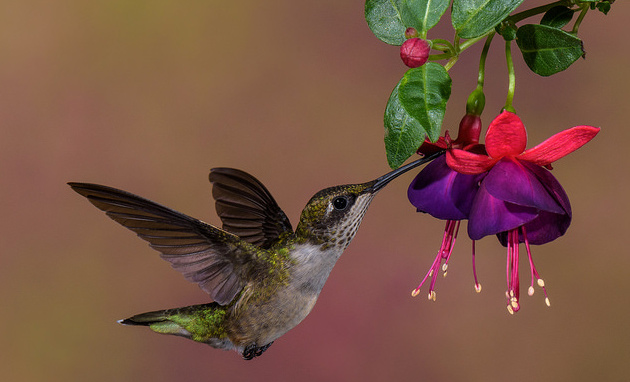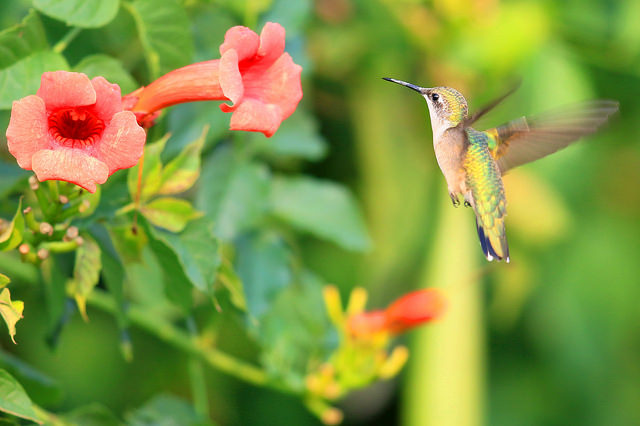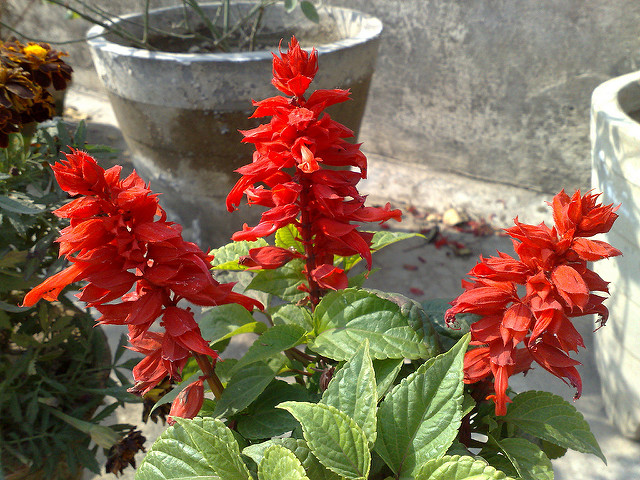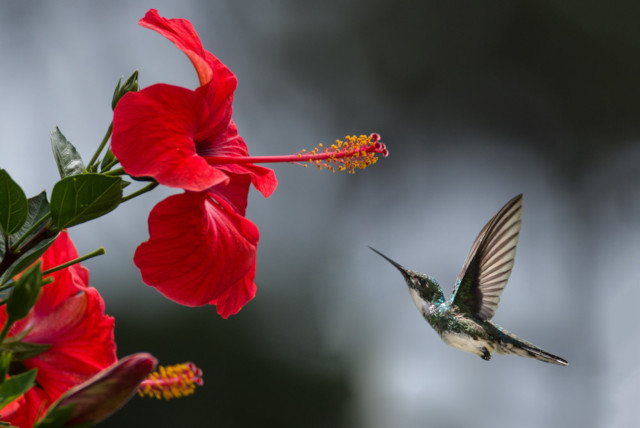Feeding Hummingbirds: How to Pick Your Plants
Many people are content to let the plastic hummingbird feeders do the work as they watch from the kitchen window. However, some gardeners prefer to go above and beyond when it comes to attracting and feeding hummingbirds. Unfortunately for these gardeners, there is no concise list of plants that will consistently attract hummingbirds in every hardiness zone. Most gardeners who have a soft spot for feeding hummingbirds will tell you that trial and error is essential when finding the best flower combinations to best feed these tiny birds.

Finding the Why
Lists like the one from The Spruce are fantastic places to start discovering which flowers are best for feeding hummingbirds. However, none of them seem to encompass all the possibilities. Since there are hundreds of different plants that hummingbirds enjoy and many different climates to consider, it is extremely difficult to find a list that incorporates all variables. This is why it is essential to fully understand why hummingbirds are more attracted to certain flowers. Let’s look at one of the most popular hummingbird plants.

The Best Plant for Feeding Hummingbirds
Trumpet Vines are almost always found at the top of every gardeners’ list of hummingbird plants. Sometimes called hummingbird vines, these plants are notorious for their ability to attract hummingbirds. Seemingly made for feeding hummingbirds, the red, orange, and yellow blooms are long and thin. Hummingbirds can maneuver their long beaks and small bodies easily into the tubular flowers that other pollinators are unable to reach. This lack of competition means the majority of the nectar can be consumed by the more timid hummingbirds. Another thing that makes Trumpet Vines attractive is their color. Since hummingbirds are unable to smell, they gauge whether a plant seems tasty based on its color. Reds, oranges, and pinks are most attractive to them. Since Trumpet Vines grow flowers in a shade of orange, hummingbirds can’t resist!

Take Note!
Using this as an example should help you be most effective at feeding hummingbirds. While you may be unable to grow Trumpet Vines in your hardiness zone there are similar plants that hummingbirds will also appreciate. You can take note of which plant characteristics hummingbirds seem to prefer. For example, petunias, particularly the red or pink varieties, are quite desirable to hummingbirds. Alternatively, Fuchsias, Morning Glories, Daylilies, and Scarlet Sage are also found in many hummingbird gardens.

Share Your Knowledge
While it can be frustrating to not find all the answers online, part of the fun is experimenting! Keep in mind that your hummingbird garden could look drastically different from another. It is important to pay attention to what the hummingbirds in your area tend to prefer. You may need to adjust your garden in order to continue feeding hummingbirds most effectively. It can also be extremely beneficial to share your experience with other local gardeners. Plus, they may have some new-found tips and tricks that you can implement in your own garden!
